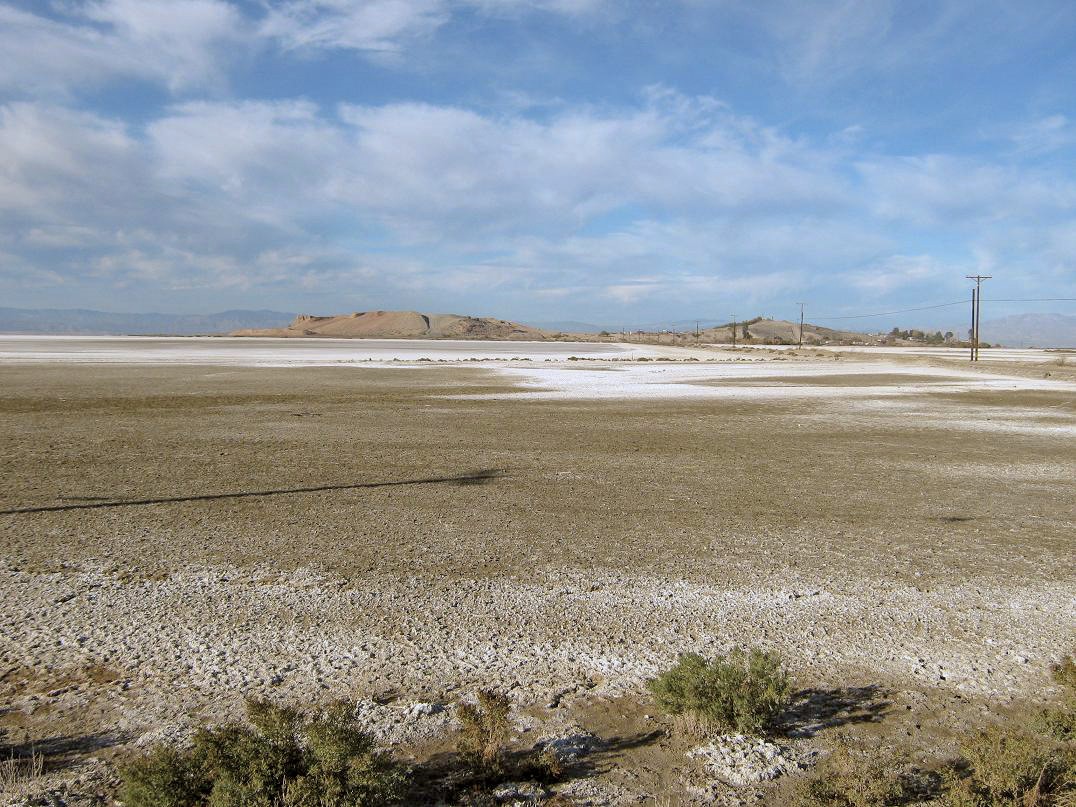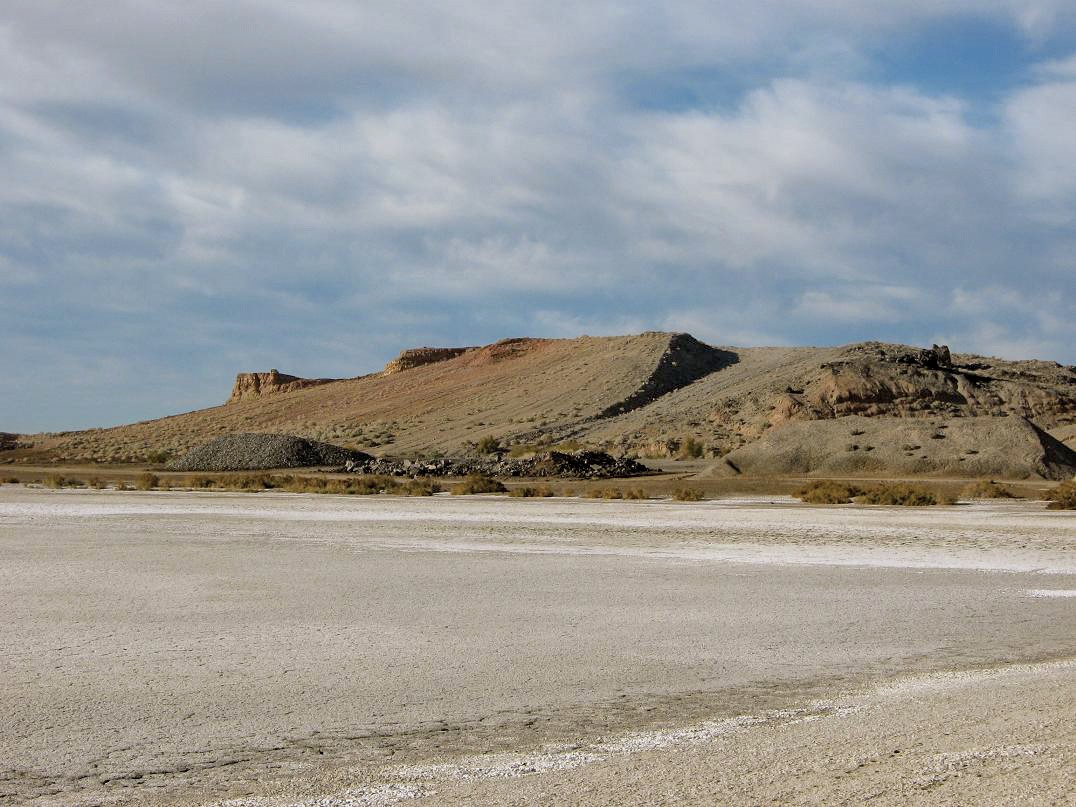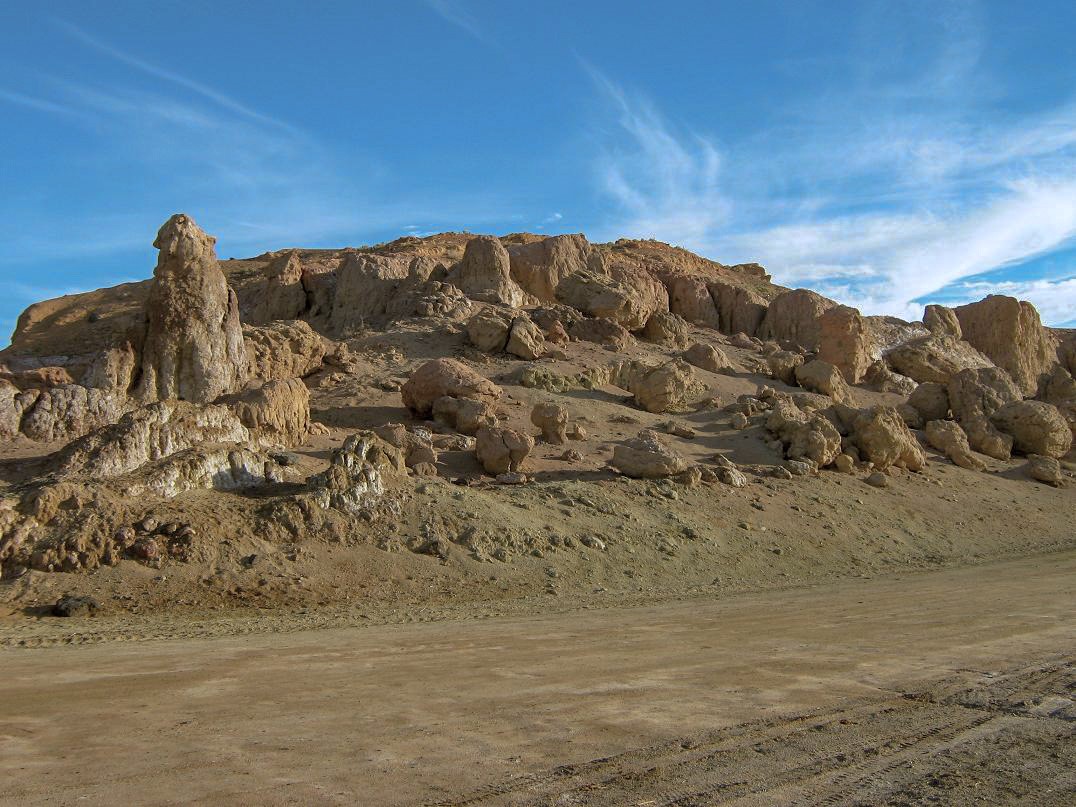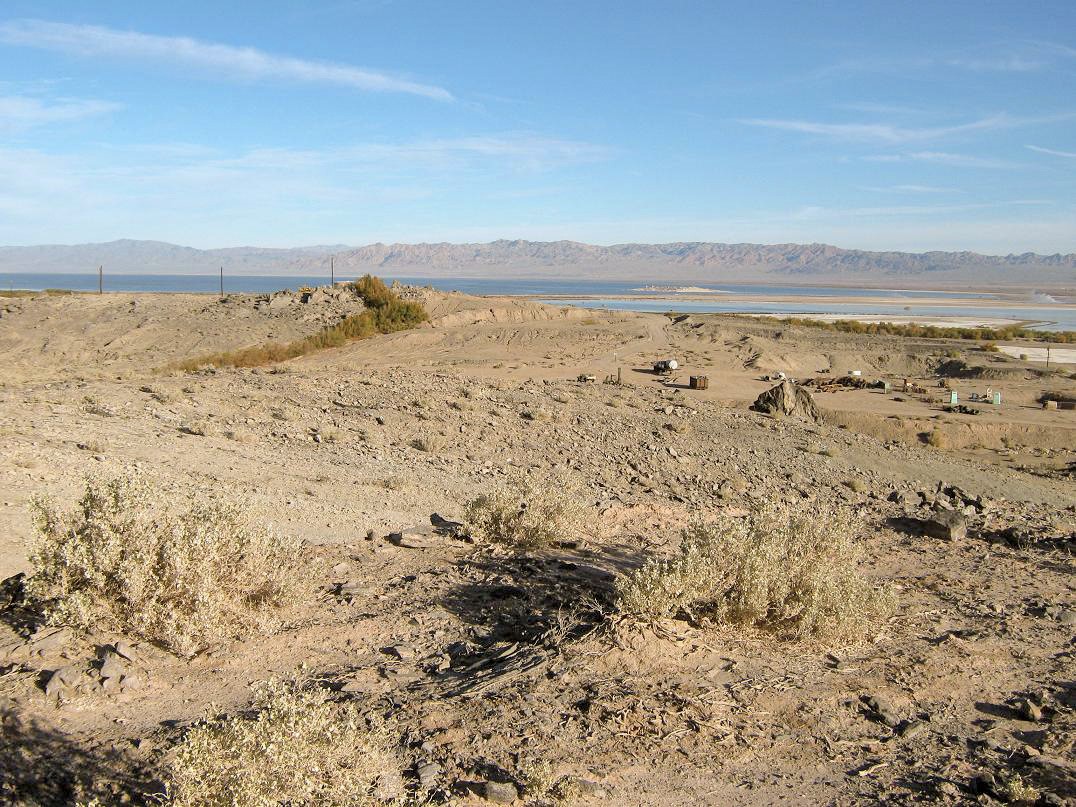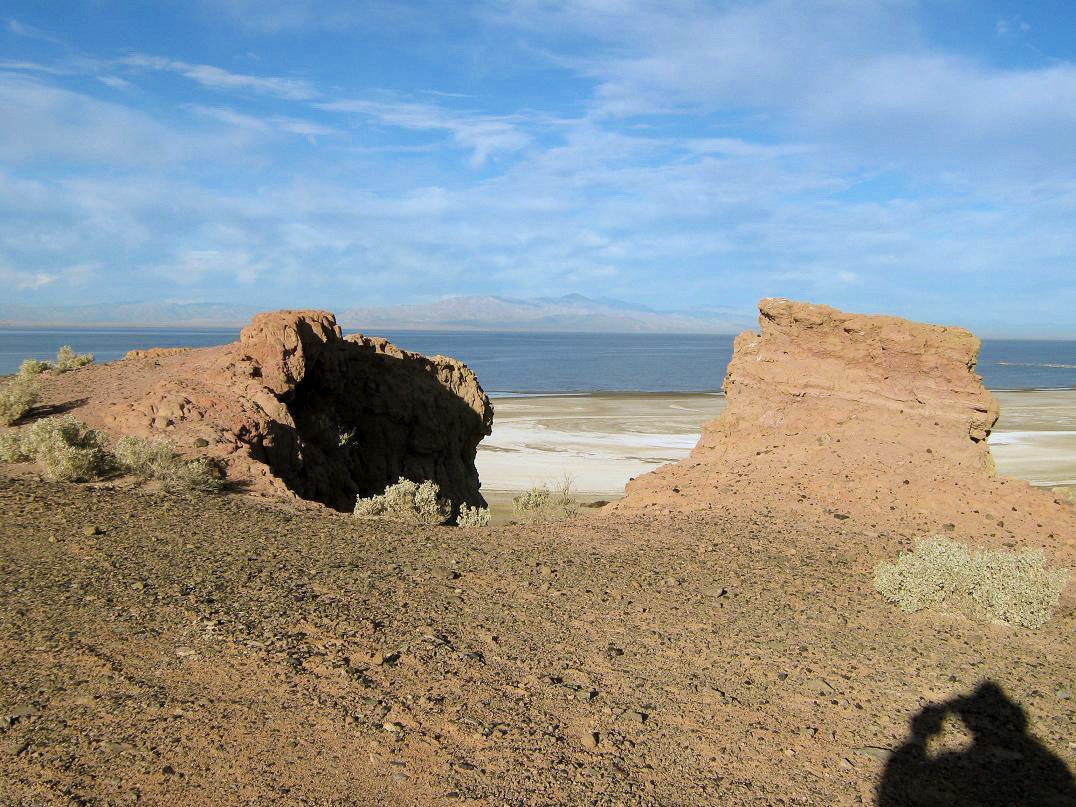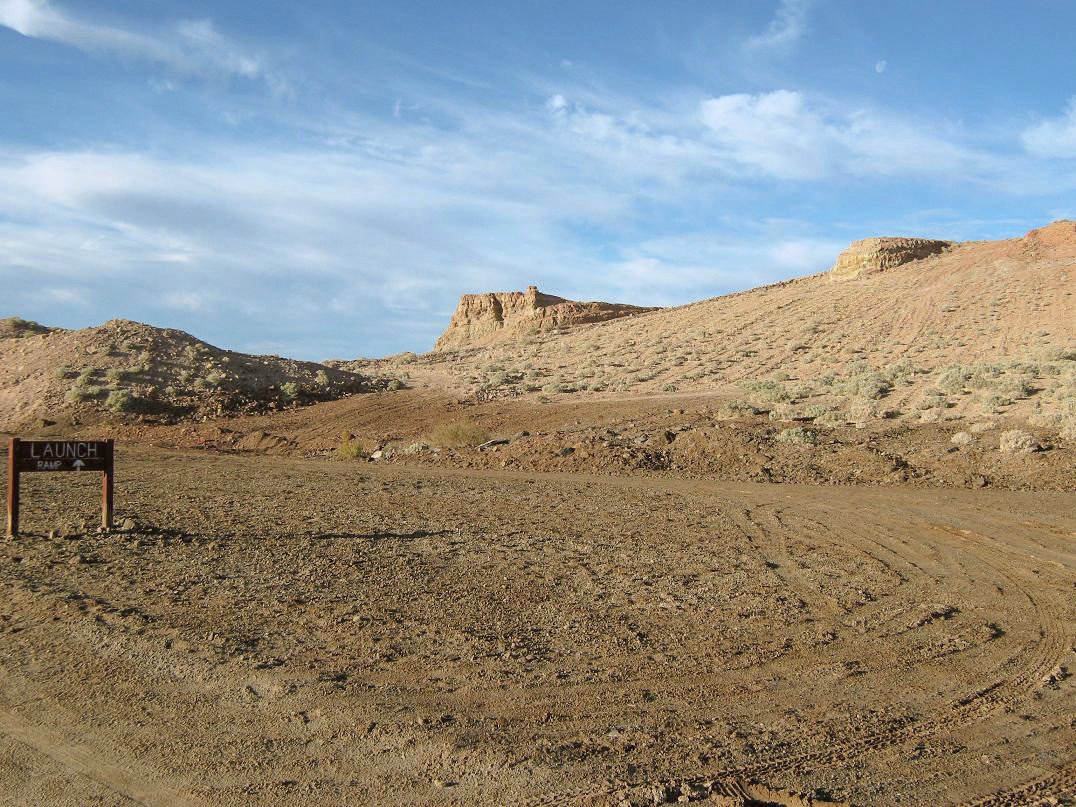
The Mountains of California
www.surgent.net |
| Red Island • Salton Sea |
• East Shore, Salton Sea • Salton Buttes Volcanic Area • Imperial County |
Date: January 4, 2010
• Elevation: -127 feet
• Prominence: 100 feet
• Distance: 0.5 mile
• Time: 1 hour
• Gain: 100 feet
• Conditions: Cold, high clouds
California
•
Main
•
PB
Red Island (or Red Hill) is a low mound of mud on the east shore of the Salton Sea. From a distance, it does not look like much, but looks can be deceiving. It is a volcano, and Southern California's only active one, for the time being. Also, because the Salton Sea has such a low elevation, the summit of Red Island lies below sea level, which is cause enough (for me) to actually drive here, camp and climb the hill.
I had been in SoCal for a few days visiting my brother's family, with late Christmas gifts for the kids. Two days earlier, I climbed a real mountain, Black Butte in the Chuckwalla Range between Desert Center and Blythe. Now I was headed home to Arizona. From my brother's place in Cucamonga, I left late and drove to the Salton Sea in the dark, arriving close to midnight.
The Salton Sea is a bizarre place. It lies astride the San Andreas Fault and its elevation is usually stated as 235 feet below sea level. The Salton Sea is the latest version of a series of bodies of water to inhabit this depression, dating back to ancient Lake Cahuilla, which once stretched from current-day Palm Springs south into Mexico. As the region dried and became more desert-like, these lakes would shrink and completely vanish. The Salton Sea as we know it formed between 1905-1907 when waters from the New River breached dams and flooded the basin. Only a natural swell of land in Mexico, 40 feet above sea level, guards against the ocean (Sea of Cortez) from completely inundating the depression.
The sea today covers a couple-hundred square miles, but is shallow, at most 25 feet deep, depending on how much new water has flowed in, or evaporated away in the heat. These days, it is a catchment for all the run-off from the farms in the Imperial Valley. The sea is an endorheic lake, since there is no natural outlet. Water "leaves" the sea only by evaporation, which is easy to do since summer temperatures here often exceed 120 degrees Fahrenheit. It is salty and full of chemicals. Algae blooms and fish kills happen regularly. In summer, when it is extremely hot, the Salton Sea can be one of the most dreadful places on the planet. If the heat doesn't knock you flat, the smell will.
Developers tried to sell lots around the Sea's shore back in the first half of the 20th Century, back when, for a short period of time, it was plausible to actually boat or swim in the water. Not surprisngly, the remoteness, the harsh heat, the salty and chemical-laden water, and the unbelievable stink caused all such schemes to fail. This is not a dead sea, though. There are fish in the water and migrating birds use the sea as a waypoint. When conditions are just right (or "wrong", depending on your point of view), fish kills are not uncommon and that's when the smell can be legendarily awful.
I first visited the Salton Sea in 1989, during a mid-summer day trip to and from Blythe (don't ask me why I went to Blythe). It was hot, about 110 degrees, and all I did was stick my foot into the water. Other than driving by it a few times since then, I have never visited the Salton Sea deliberately, until now. I followed Interstate-10 to State Route CA-86 in Indio, then CA-111 into Niland. From Niland, I went west on Sinclair Road to Garst Road, then onto Red Hill Road, following the signs. I arrived in the dark, and it took me awhile to locate the camp manager. He had no camping spots for me, but said I could park in an RV overflow lot, which worked well for me. I had privacy and a tree. Since I was sleeping in the bed of my truck, I did not need many amenities.
The next morning, it was cold. I took time to explore the area. This is the Red Hill Marina, a county run facility with spaces for tents, RVs and presumably boats since it's a marina. The water's level was lower and the docks were nowhere near the water. I took one step onto the sabkha (mud-covered salt flat) and immediately stepped into about a foot of soft, smelly goo. I backed off and decided I didn't really need to walk out to the water's edge. I then walked around the complex. There appears to be a lot of long-term campers here, set in for the winter. The whole subculture surrounding the Salton Sea has a kind of "Mad Max" feel to it. This seems to be a place where no one asks questions.
Finally, it was warm enough for the hike. I walked the perimeter road until I was on the other side of this island, south of the main hill. A steep slope through a set of pillars brought me to the top almost instantly. The slope was covered in obsidian shards, from small specks to fist-sized rocks. Apparently there are steam vents around this little hill. See the link above about these vents and how they are detected.
I spent a few minutes seeking out the "Alamo" benchmark, but only found its two witness markers. The top is flat and mildly brushy, but the views were actually nice. The Salton Sea took up most views. Surrounding peaks like Villager, Rabbit, the Chocolate Mountains and the Orocopia Mountains were visible. Even far-off snow-clad Mount San Jacinto was visible. Some steam-producing geothermal plants were nearby. Red Hill is one of about seven little bumps that comprise the vocanic field. It's not surprising that it's so geologically active.
I descended by following a road to a saddle, only then noticing a sign against trespassing, probably put there to keep people from driving their vehicles up there. I was back to my truck in less than an hour, and that's only because I took my merry time. With my trip now over, I drove out to Holtville and El Centro and home via Yuma, Gila Bend and Maricopa.
My thanks to Ed Wilson, who alerted me to the volcanic history of this region.
|
|
